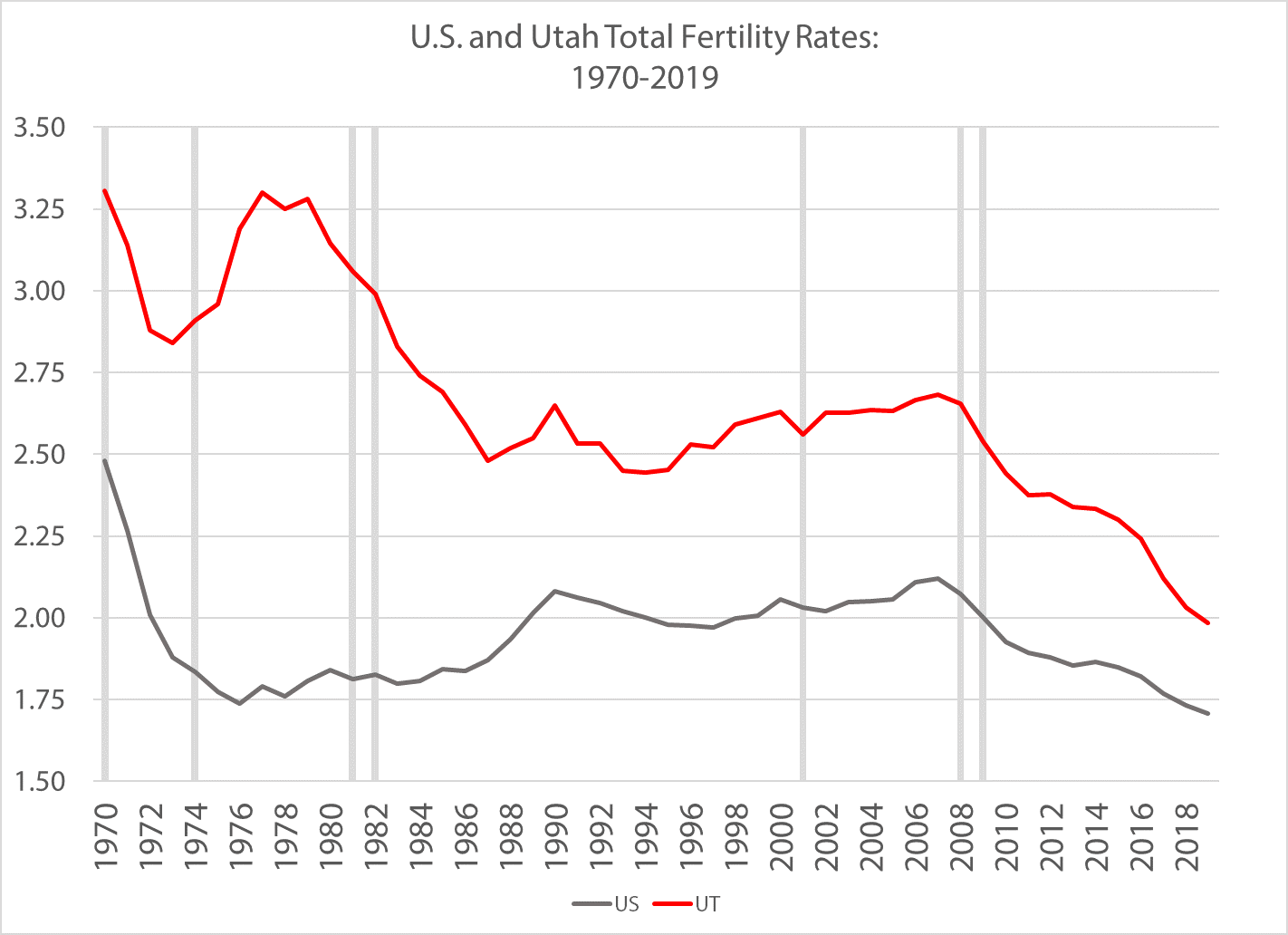Blog Post
Insight: What’s Going to Happen to Fertility?
By: Emily Harris
Mar 25, 2021 – Why are people having less children? Are small families here to stay? Will declines in fertility continue or reverse? What does a lower fertility rate mean for our future? Can our economy handle a smaller workforce? Should we try to convince people to start having more children again? How has COVID-19 affected fertility?
Wow. So many questions. And I’ve heard each of them asked many times since I started working at the Gardner Institute over five years ago.
The public discourse and concern over declining fertility rates have reached an all-time high as we pass the first anniversary of the COVID-19 global pandemic. In reality, declining fertility is a global trend that has persisted for many decades (see Table).
International Total Fertility Rates: 1990 and 2018
Source: OECD (2021)
The United States consistently has one of the highest fertility rates among high-income countries, and Utah has one the highest fertility rates in the United States. So why all the concern? Is the decline in fertility a grave issue?
Well, it depends on who you ask.
We often hear that declining fertility spells demographic trouble for the population’s age structure as elders outnumber youth and the labor-aged population declines. If fertility falls for decades, populations can decrease as deaths outnumber births. Economies might struggle without a large, homegrown workforce. While these scenarios are certainly possible, they can also be mitigated by migration and technological innovations that make labor more productive. Because demographic changes are apparent well in advance, countries and communities have time to respond to the needs of a changing demographic structure. There are also benefits to declining fertility rates (not to be confused with declining population): teen birth rates have sharply dropped, fewer children per household can mean higher standards of living for individual children, and less environmental impact from the human population.
If you ask me, the most important question is this: “Are individuals able to have children if they want them?” Significant contributors to modern declining fertility in high-income countries include the increasing demands of jobs, education, and family life (particularly for women), economic insecurity, and increasing costs of living, especially housing and child care. As we have seen[i], the COVID-19 period has intensified these dynamics, and women have borne the brunt of the family/work incompatibilities. Consequently, women’s labor force participation ranges have plunged, and this societal experience won’t be forgotten anytime soon.
Not surprisingly, early data shows that births in the U.S. are down compared to the year before, and births are anticipated to be lower than usual for the duration of the pandemic. However, based on historical data and trends (figure shown below), there is reason to believe that fertility and births might temporarily rebound after the pandemic/recession, though permanent increases in fertility are unlikely.
Note: Gray bars denote economic recession
Source: National Center for Health Statistics, Utah Department of Health
In an attempt to increase fertility rates, governments all over the world have enacted pro-family policies such as child tax credits, paid family leave, childcare subsidies, and flexible working schedules. It is still unclear whether or not these policies increase fertility in the long-term, but studies have shown that there have at least been short-term increases or “booms” in births in some of these countries. In the U.S., there has been interest from both sides of the political aisle to pull different policy levers to either support existing families or indirectly encourage families to have more children, but there has been very little agreement on the best or most effective way to do that.
So what’s going to happen to fertility? Well, we don’t really know, but luckily, we may have the ability to influence the future. We have been able to identify both positive and negative conditions and forces that contribute to declining fertility. It is now our job to decide which conditions are worth targeting, and which conditions are just a natural part of societal progression. If we do, as a society, want to support young families and enable them to have more children, which policies are most desirable and efficacious? Or, are smaller families an inevitable and permanent condition?
Emily Harris is a demographer at the Kem C. Gardner Policy Institute.
[i] https://fortune.com/2021/01/29/us-unemployment-rate-women-job-losses-december-2020-numbers-workforce-covid-19-pandemic-impact/ ; https://www.wsj.com/articles/how-the-coronavirus-crisis-threatens-to-set-back-womens-careers-11601438460 ; https://www.npr.org/2020/10/28/928253674/stuck-at-home-moms-the-pandemics-devastating-toll-on-women








